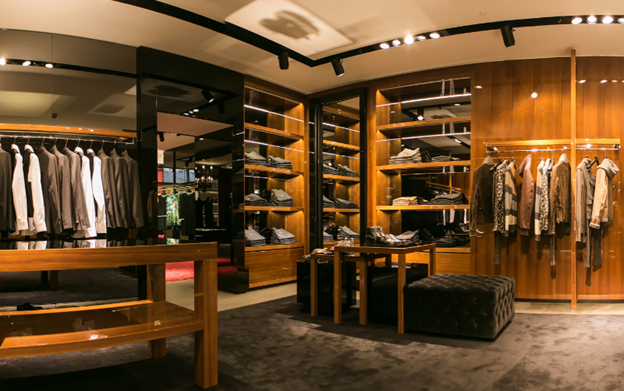Retail spaces play a pivotal role in shaping a brand’s identity and customer experience. In a bustling market like Singapore, a commercial interior design company can significantly impact how a retail environment is perceived and utilised. Tailoring design solutions to meet the unique needs of retail spaces is crucial for enhancing both functionality and appeal. This article explores key considerations and strategies that a commercial interior design company in Singapore employs to create effective retail environments.
1. Understanding Brand Identity
The first step for any commercial interior design company when designing a retail space is to thoroughly understand the brand’s identity. This involves delving into the brand’s values, target audience, and overall vision. A well-designed retail space should reflect the brand’s essence and create a cohesive experience for customers. By aligning the interior design with the brand’s image, designers ensure that the space not only attracts but also engages customers effectively.
2. Creating a Welcoming Atmosphere
A key aspect of successful retail design is creating a welcoming atmosphere. The layout, colour scheme, and lighting all play significant roles in setting the tone of the space. Designers focus on crafting an inviting environment that encourages customers to browse and interact with the merchandise. An effective design strategy includes using warm colours, comfortable lighting, and intuitive layouts to ensure that customers feel at ease and drawn into the space.
3. Maximising Space Efficiency
Retail spaces often require efficient use of space to accommodate various products and customer flow. Commercial interior design companies in Singapore employ strategies to maximise the available space while maintaining a functional and aesthetically pleasing environment. This includes optimising shelving, display areas, and traffic flow to ensure that the space remains organised and accessible. By carefully planning the layout, designers help retailers make the most of their floor space.
4. Incorporating Visual Merchandising Techniques
Visual merchandising is a critical component of retail design. A commercial interior design company integrates visual merchandising techniques to highlight key products and create engaging displays. This involves using design elements such as product placement, signage, and fixtures to draw attention to specific items and promote sales. Effective visual merchandising not only enhances the aesthetic appeal of the space but also guides customers’ purchasing decisions.
5. Ensuring Flexibility and Adaptability
Retail environments need to adapt to changing trends and seasons. A commercial interior design company addresses this need by creating flexible and adaptable spaces. This may involve designing modular fixtures, adjustable display areas, and versatile furniture that can be easily rearranged or updated. By incorporating flexibility into the design, retailers can efficiently respond to new trends and changing product lines without requiring a complete redesign.
6. Integrating Technology
Incorporating technology into retail spaces can enhance the shopping experience and streamline operations. Interior design companies in Singapore integrate various technological elements, such as digital signage, interactive displays, and point-of-sale systems, to improve customer engagement and operational efficiency. Technology not only helps in creating a modern and innovative environment but also supports retail strategies aimed at increasing customer interaction and satisfaction.
7. Prioritising Customer Flow and Accessibility
A well-designed retail space should facilitate smooth customer flow and accessibility. Designers focus on creating clear pathways, strategically placing merchandise, and ensuring easy navigation throughout the store. Accessibility considerations include designing spaces that are inclusive for all customers, including those with disabilities. By prioritising customer flow and accessibility, designers help create a more enjoyable and efficient shopping experience.
8. Emphasising Quality and Durability
Retail spaces endure high levels of foot traffic, so the quality and durability of materials used in the design are crucial. A commercial interior design company selects robust materials that can withstand wear and tear while maintaining their aesthetic appeal. This focus on quality ensures that the retail environment remains attractive and functional over time, providing long-term value for the business.
9. Incorporating Sustainable Design Practices
Sustainability is increasingly important in commercial interior design. Many design companies in Singapore now incorporate sustainable practices into their projects. This includes using eco-friendly materials, energy-efficient lighting, and sustainable manufacturing processes. By adopting green design practices, retailers can not only reduce their environmental impact but also appeal to environmentally conscious customers.
10. Providing Post-Design Support
The role of a commercial interior design company extends beyond the initial design and implementation. Providing post-design support is essential for ensuring that the retail space continues to meet the client’s needs. This may include offering maintenance services, design adjustments, and advice on how to maximise the effectiveness of the space. Ongoing support helps retailers keep their environments fresh and aligned with their evolving business goals.
In conclusion, a commercial interior design company in Singapore plays a crucial role in tailoring solutions for retail spaces. By focusing on brand identity, space efficiency, and customer flow, and incorporating modern technology and sustainability, designers create environments that enhance the shopping experience and support business success.
For more information, contact Ampersand Associates today.

